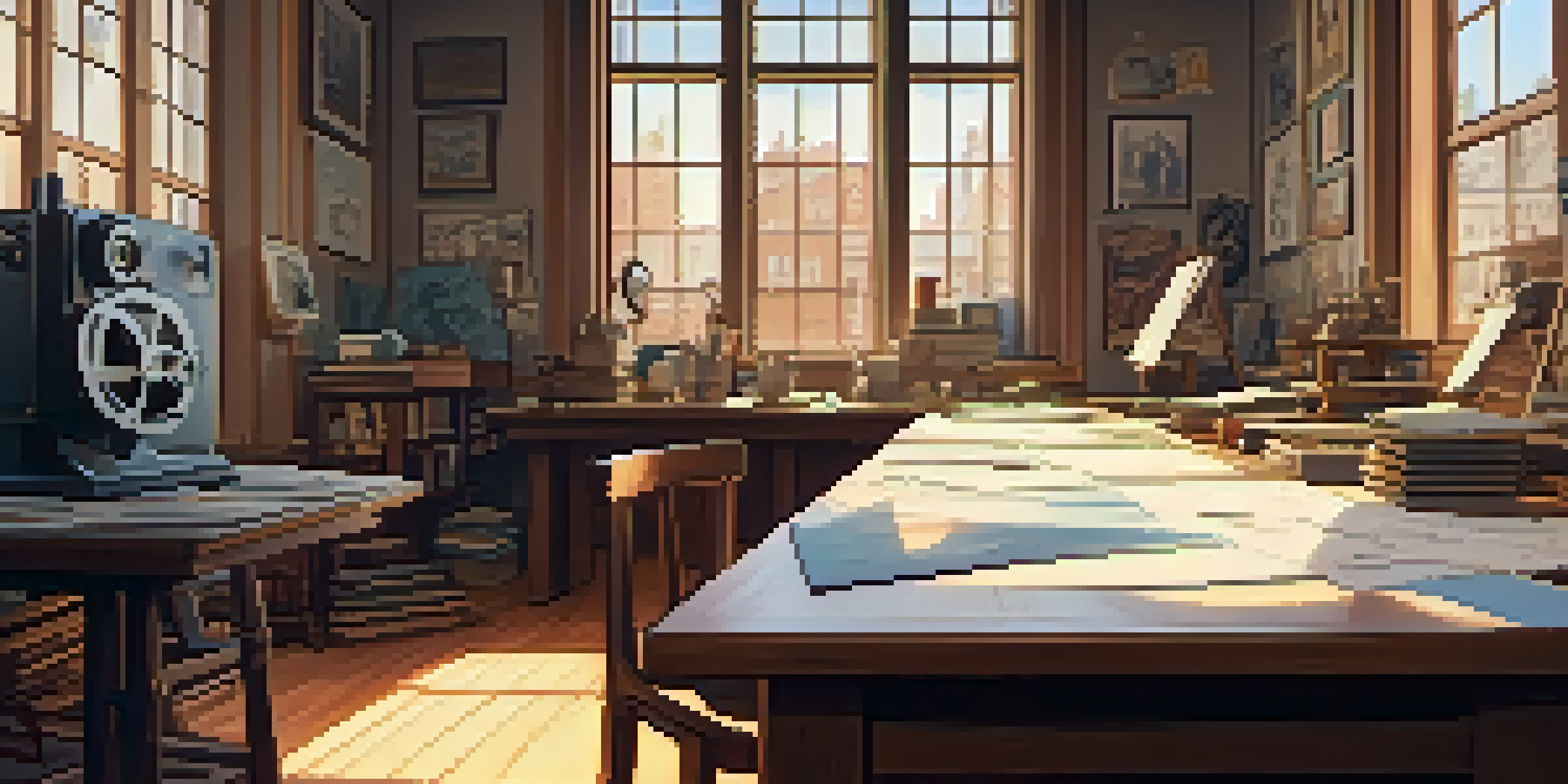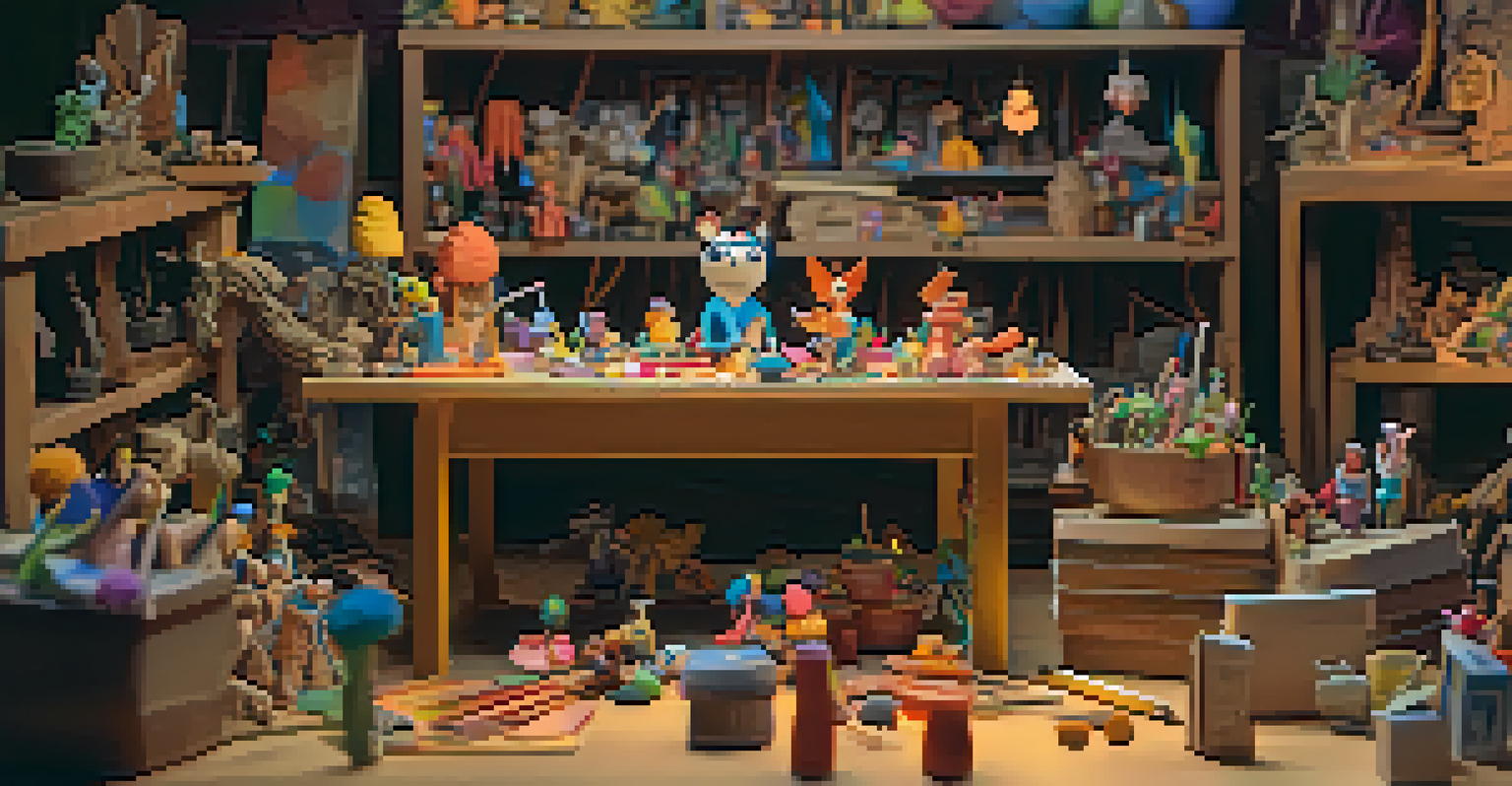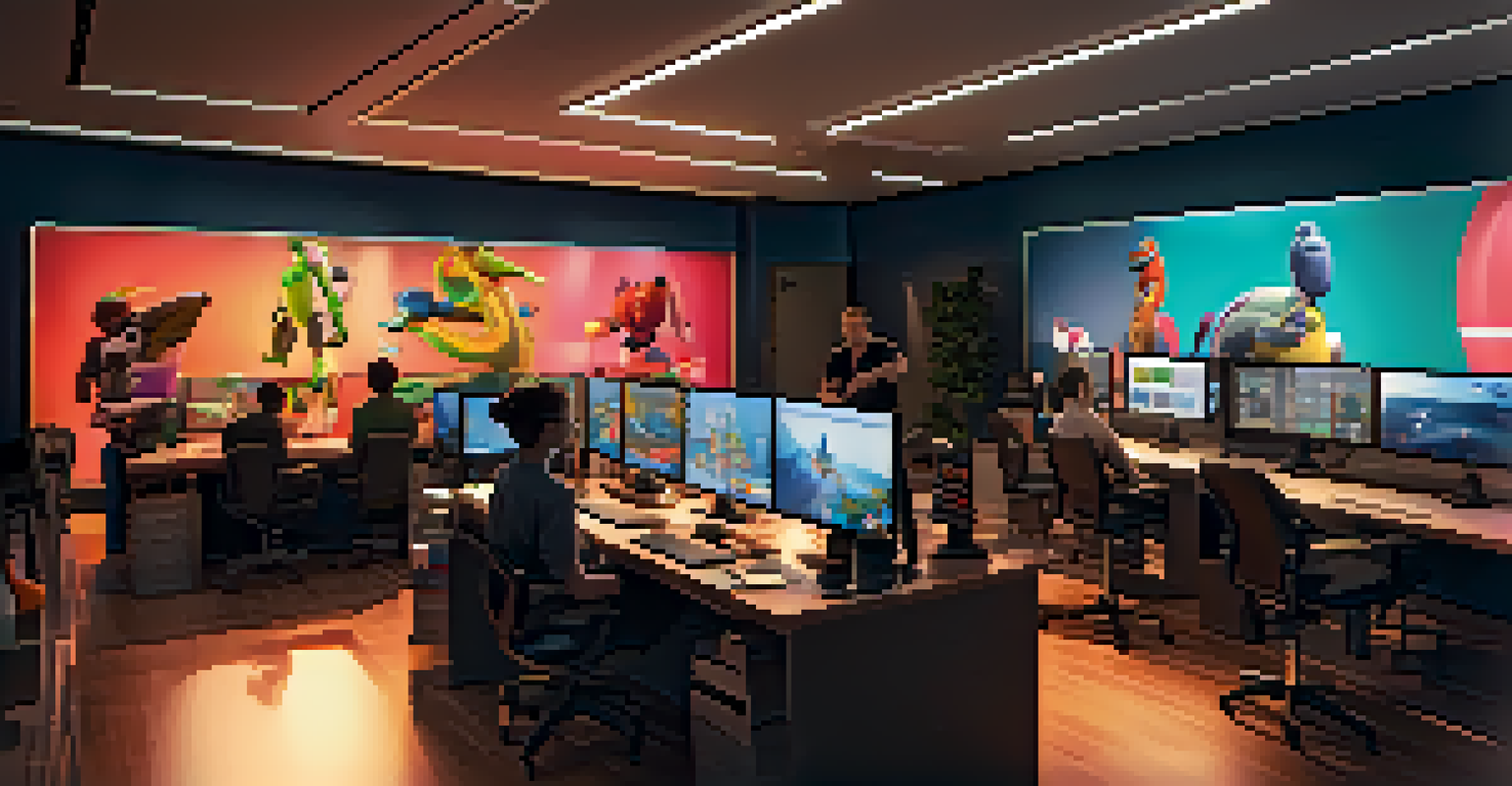Techniques Behind Animation: From Traditional to Digital Art

Understanding Traditional Animation Techniques and Their Charm
Traditional animation, often referred to as hand-drawn animation, involves creating individual frames by hand. This technique has a nostalgic charm that many artists and viewers cherish. Each frame is meticulously drawn, making the process both time-consuming and labor-intensive, but the results can be stunningly beautiful.
Animation is not the art of drawings that move but the art of movements that are drawn.
One of the most famous examples of traditional animation is Disney's 'Snow White and the Seven Dwarfs,' which showcases the painstaking effort of animators in bringing characters to life. The fluidity and expressive nature of hand-drawn animation give it a unique warmth that resonates with audiences. This technique often requires a deep understanding of movement and timing, as animators must think in sequences.
Despite the rise of digital animation, traditional methods still hold a special place in the industry. Many artists blend traditional and digital techniques, allowing them to create visually captivating work that pays homage to the roots of animation while embracing modern technology.
The Basics of Stop Motion Animation: A Timeless Technique
Stop motion animation involves photographing physical objects in small increments to create the illusion of movement. This technique dates back to the early 20th century and remains popular for its tactile quality. Artists often use clay models, puppets, or everyday objects to bring their stories to life frame by frame.

A classic example is 'The Nightmare Before Christmas,' where intricate puppets were painstakingly moved and photographed to create a captivating world. The charm of stop motion lies in its handcrafted feel, making it distinct from its digital counterparts. It requires a keen eye for detail and a lot of patience, but the results can be incredibly rewarding.
Traditional Animation's Timeless Charm
Traditional animation, with its hand-drawn frames, evokes nostalgia and showcases the artistry behind character movement and expression.
While stop motion may seem labor-intensive, advancements in technology have helped streamline the process. Today, animators can use software to assist with timing and sequencing, making it easier to achieve the desired effect while maintaining the unique characteristics of this beloved technique.
Exploring 2D Animation: The Heart of Digital Techniques
2D animation brings illustrations to life on a flat plane, allowing artists to create dynamic visuals without the constraints of three-dimensional space. This technique has evolved significantly with the advent of digital tools, enabling smoother animations and more complex movements. Programs like Adobe Animate have made it easier for artists to experiment and innovate.
The best animation comes from the heart, not just the head.
A great example of 2D animation is the popular series 'Avatar: The Last Airbender,' which masterfully blends traditional storytelling with modern animation techniques. The characters and environments are richly designed, showcasing the potential of 2D animation to capture intricate details. This style allows for expressive character movements that resonate with viewers.
The transition from traditional to digital 2D animation has opened up new avenues for creativity. Artists can now utilize layers, effects, and shortcuts that streamline the production process while maintaining artistic integrity. This evolution has made 2D animation more accessible to aspiring animators around the world.
Diving into 3D Animation: The New Frontier of Storytelling
3D animation has revolutionized the animation landscape, allowing for lifelike characters and environments. Unlike traditional and 2D animation, 3D utilizes computer-generated imagery (CGI) to create depth and realism. This technique has become a staple in modern filmmaking, with studios like Pixar and DreamWorks leading the charge.
For instance, films like 'Toy Story' and 'How to Train Your Dragon' showcase the remarkable capabilities of 3D animation. The level of detail and the ability to manipulate light and shadow create an immersive experience that captivates audiences. Animators can create complex character movements and interactions that would be challenging to achieve with traditional methods.
3D Animation: A New Storytelling Era
3D animation utilizes computer-generated imagery to create lifelike characters and immersive worlds, revolutionizing modern filmmaking.
While 3D animation offers incredible possibilities, it also comes with its own set of challenges. Learning to use software like Blender or Autodesk Maya can be daunting, but the results can be breathtaking. As technology advances, the line between reality and animation continues to blur, pushing the boundaries of storytelling.
The Role of Motion Capture: Blending Reality with Animation
Motion capture, often referred to as 'mocap,' is a technique that records the movements of real actors and translates them into digital models. This method has gained immense popularity in both animation and video game development, allowing for incredibly lifelike character animations. By capturing subtle movements and expressions, artists can create more relatable and believable characters.
A notable example of motion capture is found in films such as 'Avatar,' where actors wore specialized suits to bring their characters to life in a digital world. This technique bridges the gap between live-action and animation, providing a unique storytelling approach. The technology behind motion capture continues to evolve, enhancing the realism of animated characters.
While mocap offers many advantages, it still requires skilled animators to refine and polish the captured data. The blend of human performance and digital artistry results in a captivating experience that resonates with audiences, showcasing the power of technology in the animation industry.
Understanding CGI: The Magic Behind Modern Animation
Computer-generated imagery (CGI) is a powerful tool that has transformed the animation landscape. It allows artists to create stunning visuals and intricate environments that would be impossible to achieve through traditional methods alone. CGI has become essential in both animated films and live-action movies, providing a seamless integration of real and virtual elements.
Movies like 'The Lion King' (2019) demonstrate the capabilities of CGI, blending lifelike animals with beautifully rendered landscapes. This technique enables filmmakers to craft expansive worlds that captivate audiences and enhance storytelling. CGI can create anything from fantastical creatures to realistic environments, pushing the boundaries of what animation can achieve.
VR: Immersive Animation Experiences
Virtual reality transforms animation by allowing audiences to step into animated environments, enhancing engagement and storytelling.
As technology advances, the tools available for CGI continue to improve, allowing for more detailed and realistic animations. Learning CGI requires a strong understanding of software like Maya or Cinema 4D, but the potential for creativity is limitless. This technique plays a crucial role in shaping the future of animation and visual storytelling.
The Intersection of Animation and Virtual Reality: A New Dimension
Virtual reality (VR) is a game-changer for the animation industry, offering viewers an immersive experience that traditional methods cannot match. By placing audiences directly into animated environments, VR creates a sense of presence and engagement that enhances storytelling. Animators are now exploring new ways to craft narratives that leverage this technology.
For example, VR experiences like 'Tilt Brush' allow users to create and interact with 3D art in a virtual space, revolutionizing how we think about animation. This technique invites users to become part of the story, blurring the lines between creator and audience. The possibilities for artistic expression in VR are endless, opening new avenues for animators to explore.

While still in its infancy, the intersection of animation and VR holds tremendous potential. As technology advances, we can expect to see more innovative projects that push the boundaries of storytelling and audience engagement. This fusion of art and technology is an exciting frontier for the animation industry.